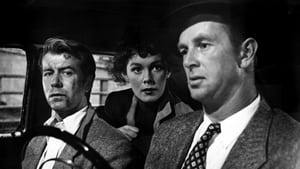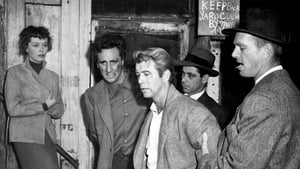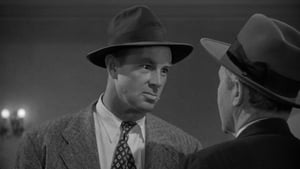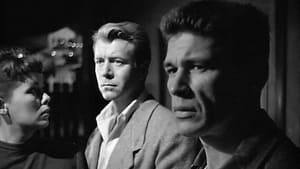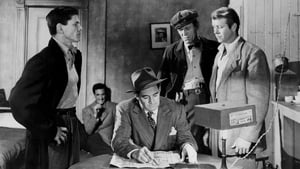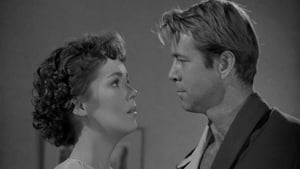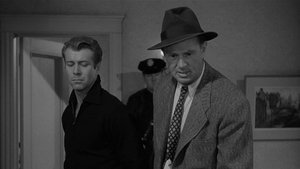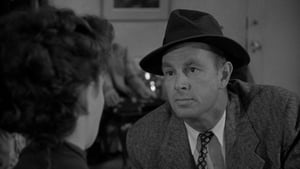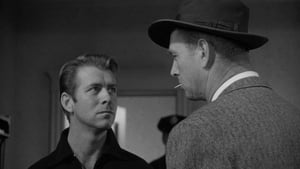Contact: info@alwanfilm.com
Video Sources 0 Views
- Watch trailer
- Crime Wave

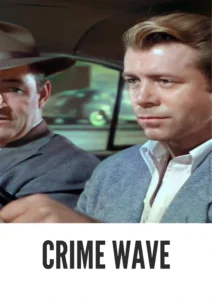
Synopsis
Table of Contents
ToggleFilm Noir Revisited: Unveiling the Dark Charms of Crime Wave 1953 Colorized Review

Introduction
In the grand tapestry of cinema history, few genres evoke as much intrigue and fascination as film noir. Defined by its shadowy visuals, morally ambiguous characters, and labyrinthine plots, film noir continues to captivate audiences decades after its heyday. Among the myriad of noir classics that have left an indelible mark on cinematic history, “Crime Wave” (1953) stands as a shining example of the genre’s enduring allure. In this article, we embark on a journey through the dimly lit streets of Los Angeles to explore the timeless appeal of “Crime Wave,” unraveling its narrative intricacies, dissecting its thematic layers, and examining its impact on the cinematic landscape.
Check The Full Colorized Movies List
Check Our Colorized Movies Trailer Channel
Understanding Crime Wave 1953 Colorized: Director, Cast, and Genre
Directed by the Hungarian-American filmmaker André De Toth, “Crime Wave” (1953) epitomizes the essence of classic film noir. De Toth, known for his adeptness at crafting taut thrillers with palpable tension, brings his directorial prowess to bear in this gripping tale of crime and redemption. The film boasts a stellar cast, including Sterling Hayden, Gene Nelson, and Charles Bronson, each delivering nuanced performances that breathe life into their characters. Set against the backdrop of post-war Los Angeles, “Crime Wave” explores the dark underbelly of urban life, delving into themes of betrayal, loyalty, and the pursuit of justice.
Exploring the World of Crime Wave 1953 Colorized: Plot and Characters
At its core, “Crime Wave” unfolds as a classic noir narrative, following the plight of Detective Lieutenant Sims (Sterling Hayden) as he doggedly pursues a band of ruthless criminals responsible for a string of violent crimes. When a prison escapee named Steve Lacey (Gene Nelson) becomes embroiled in the gang’s nefarious activities, Sims finds himself caught in a deadly game of cat and mouse, where the lines between law and lawlessness blur with each passing moment. As the tension mounts and the stakes escalate, Sims must confront his own inner demons while navigating a treacherous landscape fraught with danger and deception.
The characters in “Crime Wave” are as complex as they are compelling, each harboring their own secrets and motivations. From the stoic determination of Detective Sims to the desperate yearning for redemption exhibited by Steve Lacey, the film’s protagonists are imbued with a sense of depth and humanity that transcends the confines of the genre. Likewise, the antagonists, led by the enigmatic mastermind Doc Penny (Ted De Corsia), exude an aura of menace and unpredictability, keeping viewers on the edge of their seats until the final frame.
The Art of Film Noir: A Brief History
Before delving deeper into the nuances of “Crime Wave,” it is essential to understand the stylistic and thematic conventions that define film noir. Emerging in the aftermath of World War II, film noir reflected the prevailing anxieties and uncertainties of the post-war era, characterized by its stark black-and-white cinematography, cynical worldview, and morally ambiguous characters. Drawing inspiration from pulp fiction, hardboiled detective novels, and German expressionism, film noir offered a dark and nihilistic commentary on the human condition, exploring themes of alienation, disillusionment, and existential despair.
“Crime Wave” (1953) and Its Early Colored Version
While “Crime Wave” was originally filmed and released in classic black and white, recent years have seen the emergence of an early colored version of the film. This decision to colorize “Crime Wave” speaks to the ongoing debate surrounding the preservation and presentation of classic cinema in the digital age. While purists may argue that colorization compromises the integrity of the film’s original aesthetic, others view it as an opportunity to introduce classic movies to new audiences and breathe new life into timeless classics. Ultimately, the decision to colorize “Crime Wave” reflects the evolving nature of film preservation and the need to balance tradition with innovation in the ever-changing landscape of cinema.
Examining “Crime Wave” (1953) as an Early Colored Film
For many cinephiles, the prospect of viewing a beloved classic like “Crime Wave” in color may evoke mixed emotions. On one hand, colorization has the potential to enhance the visual experience, adding vibrancy and depth to the film’s cinematography. On the other hand, purists may argue that colorization detracts from the film’s original aesthetic, robbing it of its timeless elegance and chiaroscuro lighting. In the case of “Crime Wave,” the decision to release an early colored version opens up new avenues for exploration and interpretation, inviting viewers to experience the film in a fresh and innovative way while preserving its historical legacy for future generations.
Influence and Legacy: Crime Wave 1953 Colorized Impact on Cinema
Beyond its immediate impact, “Crime Wave” has left an indelible mark on the cinematic landscape, influencing countless filmmakers and shaping the evolution of the film noir genre. From its innovative use of location shooting to its nuanced portrayal of complex characters, the film continues to serve as a touchstone for aspiring filmmakers and a source of inspiration for cinephiles around the world. Moreover, “Crime Wave” has sparked renewed interest in the works of André De Toth, cementing his status as a master of the noir thriller and ensuring his enduring legacy in the annals of cinematic history.
Director’s Cinematic Legacy: Beyond Crime Wave 1953 Colorized
For André De Toth, “Crime Wave” represents but one chapter in a storied career that spanned over five decades. Throughout his prolific career, De Toth demonstrated a remarkable versatility, directing films across a wide range of genres, from westerns and war dramas to horror and suspense thrillers. While “Crime Wave” remains one of his most celebrated works, De Toth’s cinematic legacy extends far beyond this singular achievement, encompassing a diverse and eclectic body of work that continues to captivate audiences to this day.
Themes Explored in Crime Wave 1953 Colorized
At its core, “Crime Wave” explores a variety of themes that resonate with audiences on a profound and visceral level. From the existential angst of Detective Sims to the moral ambiguity of the film’s central conflicts, “Crime Wave” invites viewers to confront the darker aspects of human nature while grappling with questions of fate, free will, and the nature of justice. Through its richly drawn characters and thought-provoking narrative, the film offers a compelling meditation on the complexities of the human condition, challenging viewers to confront their own beliefs and values in the process.
Reception and Controversy Surrounding Crime Wave 1953 Colorized
Upon its initial release, “Crime Wave” received critical acclaim for its gritty realism, atmospheric cinematography, and taut direction. However, the film’s legacy was not without controversy, as some critics took issue with its depiction of violence and its portrayal of law enforcement. Nevertheless, “Crime Wave” has endured as a classic of the genre, garnering a devoted following of fans and earning its rightful place in the pantheon of film noir masterpieces.
Where to Watch Crime Wave 1953 Colorized Online
For those eager to experience the dark charms of “Crime Wave,” the film is readily available for streaming on various platforms, including Amazon Prime, iTunes, and Google Play. Whether viewed in its original black-and-white format or in the newly colorized version, “Crime Wave” offers audiences an immersive and unforgettable journey into the heart of noir cinema, where shadows lurk around every corner and danger lurks in the shadows.
FAQs About Crime Wave 1953 Colorized
Q: Who directed “Crime Wave” (1953), and what other notable works are attributed to them? A: “Crime Wave” (1953) was directed by the Hungarian-American filmmaker André De Toth, known for his contributions to the film noir genre. De Toth’s directorial portfolio includes other notable works such as “Pitfall” (1948) and “House of Wax” (1953), showcasing his versatility across various cinematic styles and genres.
Q: Is “Crime Wave” (1953) available in its original black and white format, or has it only been released in a colorized version? A: “Crime Wave” (1953) was originally filmed and released in black and white, capturing the stark contrasts and shadowy atmosphere characteristic of classic film noir. However, in more recent years, an early colored version of the film has been made available, offering audiences an alternative viewing experience that adds color to the film’s visual palette while preserving its original narrative and tone.
Q: What prompted the decision to release “Crime Wave” (1953) in a colorized format, and how has this decision been received by fans and critics? A: The decision to release “Crime Wave” (1953) in a colorized format was likely driven by a desire to introduce the film to new audiences and provide existing fans with a fresh perspective on this classic noir thriller. While some purists may argue that colorization compromises the film’s artistic integrity, others appreciate the opportunity to see it in a new and immersive way. Ultimately, the reception of the colorized version has been mixed, with opinions varying depending on individual preferences and appreciation for the film’s original presentation.
Q: What are some common themes explored in “Crime Wave” (1953), and how do these themes contribute to the film’s enduring appeal? A: “Crime Wave” (1953) explores a variety of themes, including crime, justice, morality, and redemption, which resonate with audiences due to their timeless relevance and universal significance. Through its gripping narrative and well-drawn characters, the film invites viewers to reflect on their own values and beliefs, sparking thought-provoking discussions about the complexities of the human condition and the pursuit of righteousness in an imperfect world.
Q: Where can viewers watch “Crime Wave” (1953) online, and are there any special features or bonus content available with certain streaming platforms? A: “Crime Wave” (1953) is available for streaming on various platforms, including Amazon Prime, iTunes, and Google Play, making it easily accessible to audiences worldwide. While the availability of special features and bonus content may vary depending on the streaming platform, viewers can often find additional insights, behind-the-scenes footage, and commentary from filmmakers and cast members, enhancing their overall viewing experience and deepening their appreciation for this classic noir thriller.
Conclusion
In conclusion, “Crime Wave” (1953) stands as a testament to the enduring legacy of film noir, offering audiences a tantalizing glimpse into the dark and twisted world of crime and corruption. From its evocative cinematography to its morally ambiguous characters, the film captivates viewers with its brooding atmosphere and labyrinthine plot. Whether viewed in its original black-and-white format or in the newly colorized version, “Crime Wave” continues to enthrall audiences with its timeless themes and timeless appeal. As we navigate the murky waters of the human psyche, “Crime Wave” reminds us that, in the end, the line between good and evil is often blurred, and redemption is a journey fraught with peril and uncertainty.
